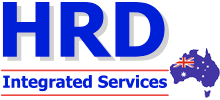RPL with HRD
Recognition of Prior Learning (RPL) is the formal recognition of a person’s current skills and knowledge, regardless of how, when or where the learning occurred. HRD RPL policy is based on the notion that most people develop skills over time that can be applied to gaining a qualification.
Some things to consider
When applying for RPL, you’ll be asked to gather recent evidence that demonstrates how you meet the knowledge and skill requirements for a qualification or unit(s) of competency. There are four key points to keep in mind.
- You must be able to prove currency of knowledge and skills. Have you used the knowledge and skills in the last 3-5 years?
- HRD must ensure that the evidence you provide conforms to the rules of evidence: it must be authentic, valid, reliable, current and sufficient.
- Evidence can include things like work records, maintenance logs, a log book, certificates or records of training you’ve attended.
- If your RPL application is for a qualification (or a unit of competency from one of these qualifications) from the following list, you will be asked to demonstrate your knowledge and skills in one or more practical assessments:
- UEE41220 Certificate IV in Electrical-Rail Signalling
- TLI31920 Certificate III in Mechanical Rail Signalling.
Applying for RPL based on workplace experience
Prior to applying for RPL, do some research on the knowledge and skills that the qualification or unit(s) of competency ask for. There are some questions you should ask yourself.
Questions before you start
- What informal or on-the-job training have I done that might be relevant?
- How recently did I learn my skills – can I still recall how to apply them?
- How can I prove that I can perform these skills or that I possess this knowledge? Remember that ‘skills’ (and knowledge) includes planning and preparation, carrying out the task and follow-up activities such as reporting.
- Can I present authentic documents that confirm I am able to do this work; for example, forms, reports, etc?
- If I was asked to demonstrate my knowledge and skills, would I be able to perform the task without prompting and meet the required standard?
HRD will help you determine if you have a valid claim to RPL and provide you with evidence-gathering advice.
Six steps to RPL
The HRD RPL process has six main steps.
- Step 1 Apply by contacting HRD to discuss your needs and experience. An experienced assessor will be able to help you clarify if RPL is the most appropriate pathway for you.
- Step 2 Enrol in the qualification/unit(s) of competency and pay the enrolment fee and the RPL fee.
- Step 3 Gather evidence. A HRD assessor will help you clarify and identify the evidence requirements.
- Step 4 Submit evidence portfolio . The HRD assessor will review the evidence you’ve gathered and submitted. You’ll be asked to fill any evidence gaps before undertaking practical assessment(s).
You may be asked to attend an RPL review interview at this time to discuss your evidence. Further reviews of your evidence may incur additional charges.
- Step 5 Undertake practical assessment. If you’re required to complete practical assessments, these will be scheduled and charged at an hourly rate.
- Step 6 RPL finalisation interview (if required) to review your RPL and finalise documents.
A word of caution
RPL can be a demanding and potentially costly process for you, and time-consuming for the assessor who’ll be assisting you and assessing your supporting evidence. Before committing yourself, consider your position carefully and be sure you can gather enough evidence to demonstrate competence.
